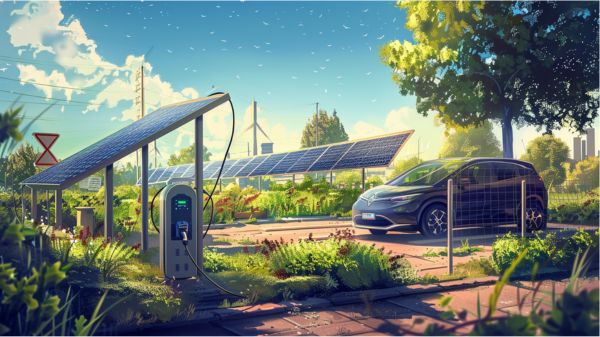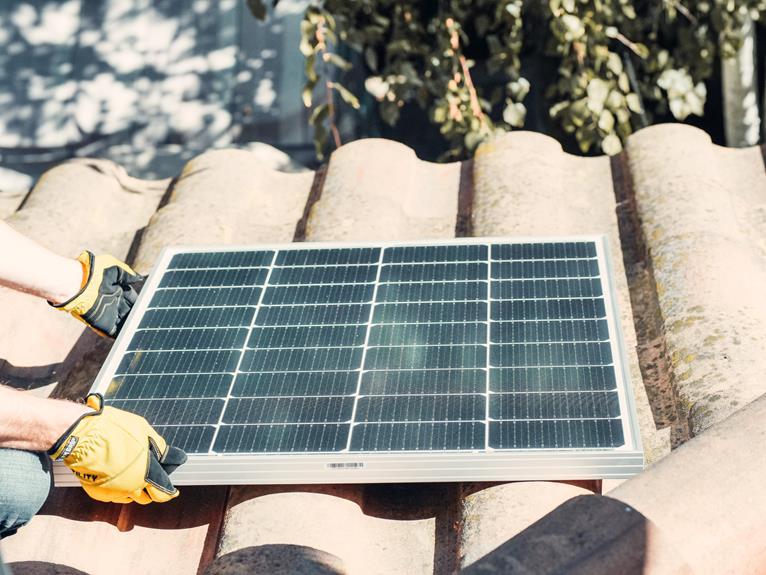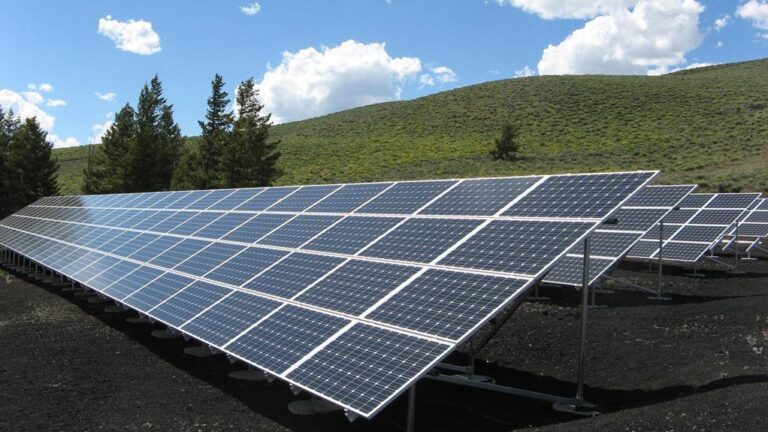How to Set Up Your Own Solar Powered Car Charging Station
Starting your own solar powered car charging station is an excellent way to leverage renewable energy while ensuring the convenience of at-home vehicle charging. To begin on this project, start by understanding the essential components and equipment required, such as solar panels, a charging regulator, and appropriate mounting structures.
Proper installation and wiring are critical for the system’s efficiency and safety. However, the initial setup is only part of the process; ongoing maintenance and testing are equally important to guarantee the best performance and longevity. What specific steps and considerations are necessary to achieve a fully functional and efficient setup?
Key Takeaways
- Select a suitable mounting structure like a carport or RV to install the solar panels.
- Securely attach solar panels using mounting brackets and screws, ensuring optimal orientation for sunlight.
- Connect solar panels to a charge controller and battery using appropriate gauge wiring and secure connectors.
- Regularly monitor and maintain the system, including battery levels, wiring, and panel efficiency.
- Test the setup by charging your vehicle and verify connections for safety and functionality.
Parts and Equipment Needed
Establishing a solar-powered car charging station requires a thorough assortment of specialized parts and equipment, such as solar panels, a charging regulator, a battery, wiring, and a car lighter socket splitter. These components form the backbone of a robust Home Charging Station, converting solar energy into usable electric power for your car.
Solar panels capture solar energy, which is then overseen by a charging regulator to guarantee consistent and safe power flow to the battery. The battery acts as an energy reservoir, storing power for when it’s needed most.
Wiring is critical for connecting these components efficiently. Standard solar cables, typically one red and one black, facilitate the transfer of power while minimizing energy loss. An inverter is also essential, converting the stored DC power from the battery into AC power, which is compatible with most electric cars. The car lighter socket splitter allows for multiple connections, ensuring versatility and convenience.
Incorporating these parts into your home charging station not only enables sustainable energy use but also reduces reliance on fossil fuels. This setup empowers individuals to harness solar power for their vehicles, ultimately promoting energy independence and environmental stewardship.
Selecting the Mounting Structure
Selecting the suitable mounting structure for your solar panels is essential for maximizing energy capture and guaranteeing the durability of your solar-powered car charging station. The choice of mounting structures has a profound impact on the versatility and effectiveness of your charging setup.
For those seeking versatile charging options, consider mounting solar panels on a carport, cabin, tent, car, truck, or RV. These varied applications allow you to harness solar energy wherever you are.
For mobile device charging during road trips, flexible solar panels can be an excellent option. These can be affixed using Command strips, providing a non-invasive method that avoids paint damage.
For semi-permanent installations, ensure secure mounting by utilizing a metal frame and bolts. This approach guarantees stability and long-term durability under various weather conditions.
Prioritizing a safe location is paramount to protect electrical equipment from potential hazards. This preemptive measure mitigates the risk of damage or accidents, ensuring the longevity of your system.
Experimenting with different mounting structures allows you to identify the most suitable setup for your needs. By carefully selecting the appropriate mounting structure, you safeguard both your solar panels and the efficiency of your solar-powered car charging station.
Installing the Solar Panels
Proper installation of solar panels is essential for maximizing energy efficiency and guaranteeing the long-term sustainability of your solar-powered car charging station. Begin by determining the best orientation and angle of the solar panels to capture maximum sunlight exposure, thereby enhancing energy generation.
Secure the solar panels to the charging station structure using sturdy mounting brackets and screws to withstand various weather conditions.
Next, assess the daily energy consumption of your electric vehicle. This critical data will guide you in selecting the appropriate number of panels and the size of panels required to meet your energy needs.
Connect the solar panels to a charge controller using suitable solar cables. The charge controller is crucial for regulating energy flow and protecting your batteries from overcharging, ensuring smooth energy regulation and storage.
To guarantee the longevity and optimal performance of your solar-powered car charging station, it is essential to regularly monitor and maintain the solar panels. This involves periodic cleaning to remove dust and debris, as well as inspecting for any damage or wear.
Consistent maintenance will not only enhance energy efficiency but also prolong the life of your solar panels, contributing to a more sustainable and liberating energy solution.
Related Post: 7 Mistakes to Avoid When Installing DIY Solar Panels.
Wiring and Connections
How can you guarantee the wiring and connections in your solar-powered car charging station are both efficient and durable? Begin by selecting the appropriate wire gauge for your wiring. The wire gauge must be adequate to handle the current and the distance between components to prevent overheating and ensure peak solar power transfer.
Proper polarity is critical; incorrect connections can lead to severe damage to your system components.
For reliable and secure connections, utilize either crimp connectors or soldering. Crimp connectors offer simplicity and consistency, while soldering provides a robust bond, essential for high-performance setups.
Given that most installations will be exposed to the elements, waterproof connectors are indispensable to protect against moisture, which can lead to corrosion and failures.
Label every connection meticulously. Clear labeling aids in troubleshooting and future maintenance, ensuring that each wire’s purpose and destination are readily identifiable. This foresight simplifies the process of identifying any issues that may arise over time, minimizing downtime and maximizing efficiency.
Testing and Maintenance
Ensuring the peak performance and longevity of your solar-powered car charging station requires a systematic approach to testing and maintenance. Regular testing is essential; begin by connecting devices to the charging station to confirm they charge correctly. This step guarantees the station’s operational integrity and reliability for your electric vehicle.
Monitoring battery levels and solar panel efficiency is important. Battery levels should be consistently checked to make sure they meet the demands of your electric vehicle. Similarly, tracking solar panel efficiency helps in identifying any drop in performance, which can be addressed promptly to maintain the best energy conversion.
Routine checks on wiring connections and fuses are crucial for safety and functionality. Inspect all wiring connections to ensure they are secure and free from corrosion, and check fuses to prevent electrical faults. Keeping the solar panels clean and free of debris maximizes energy absorption, thereby enhancing the efficiency of your solar charging station.
Implementing a maintenance schedule is recommended. A well-structured schedule allows for timely identification and resolution of issues, ensuring the long-term functionality of the station. By adhering to a meticulous maintenance routine, you can enjoy the sustainable benefits of your solar-powered car charging station for years to come.
Conclusion
Establishing a solar-powered car charging station requires careful selection of mounting structures, appropriate solar panels, and a reliable charging regulator. Secure installation and proper wiring guarantee system integrity and functionality.
Rigorous testing and ongoing maintenance are imperative for sustaining peak performance. This setup not only advances technical expertise but also promotes sustainable energy practices, reducing reliance on non-renewable resources and contributing to environmental preservation.
The meticulous execution of these steps guarantees a robust and efficient solar charging solution.






